No homeowner wants a lawn that is anything short of healthy and lush. Many people turn to fertilizers to achieve their ideal green space. As a responsible pet owner, you may wonder if it’s possible to care for your lawn while protecting your furry friends. Fortunately, the answer is yes! If you take the proper precautions and select a pet-safe fertilizer, you can enjoy a thriving lawn and a healthy pet. Here are 10 steps to make sure your lawn fertilizer is pet-safe.
1. Complete a Soil Test.

A soil test can provide valuable information to help you avoid unnecessary fertilizer chemicals that could harm your pet.
©13Imagery/Shutterstock.com
Before you select a fertilizer, it is a good idea to test your soil. A soil test can tell you what nutrients, particularly nitrogen (N), phosphorus (P), and potassium (K), are lacking in your lawn. Homeowners can purchase soil testing kits and services to receive a detailed N-P-K report. Lawn experts recommend testing every 3 to 5 years.
Understanding exactly what your lawn needs to thrive will help you make an informed decision about which pet-safe fertilizer to choose. For example, if your lawn is lacking in phosphorus but has plenty of other nutrients, you can choose an organic phosphorous supplement over a synthetic fertilizer that may be packed with unnecessary chemicals that could be harmful to your pet. Knowing just what your lawn needs can also help you choose the correct amount of fertilizer to use.
2. Know Which Ingredients to Avoid.

Potassium chloride, an ingredient in some fertilizers, can be very dangerous to pets.
©Kittisak Kaewchalun/iStock via Getty Images
Familiarize yourself with commonly used fertilizer compounds that can be harmful to pets. Some common fertilizer ingredients, such as iron and urea, can cause gastrointestinal problems in cats and dogs, particularly when consumed in higher concentrations. Chemical pesticides, herbicides, and fungicides are sometimes included in fertilizer mixes. These should be used with great care or avoided altogether, as they can be toxic to mammals.
3. Choose a Natural Fertilizer.
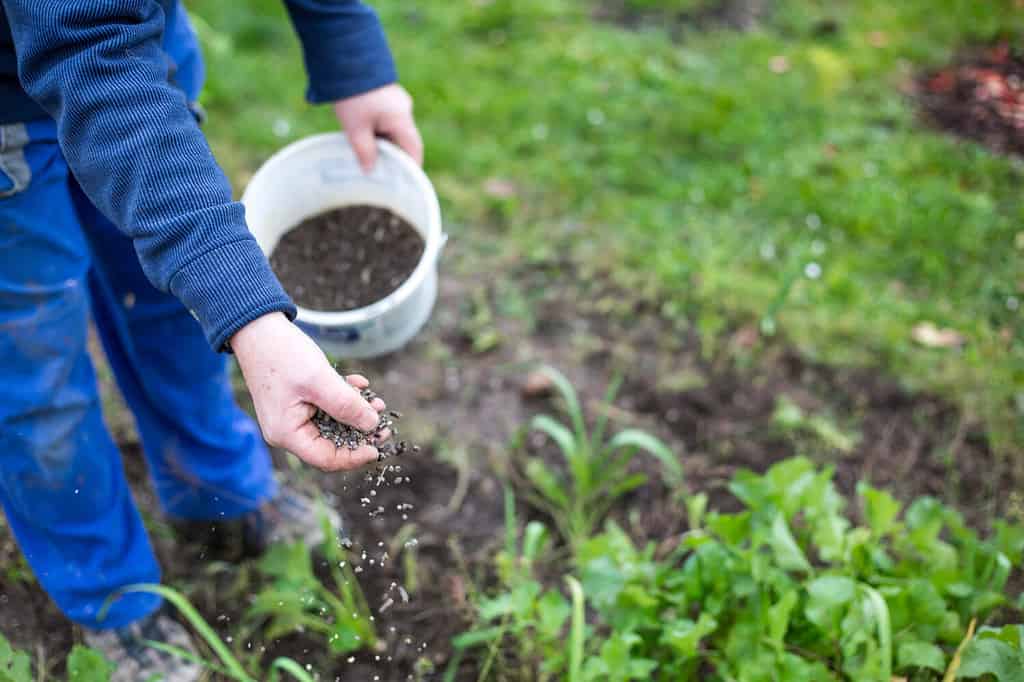
Natural and organic fertilizers are a better choice for pet safety and for protecting the environment.
©Simon Kadula/Shutterstock.com
The safest bet for a pet-friendly lawn is to choose a fertilizer that is natural, organic, and certified by the EPA (Environmental Protection Agency). This helps to ensure that your four-legged friend is not exposed to harsh chemicals and it is much better for the environment. Consider fertilizers that are made from compost or manure. Seaweed and corn meal are pet-safe and they naturally contain essential nutrients that grass needs to grow. Other organic fertilizer ingredients, such as bone meal and blood meal, are safe for animals in small amounts, but potentially harmful in large doses.
4. Clear the Lawn of Pet Toys Before Fertilizing.
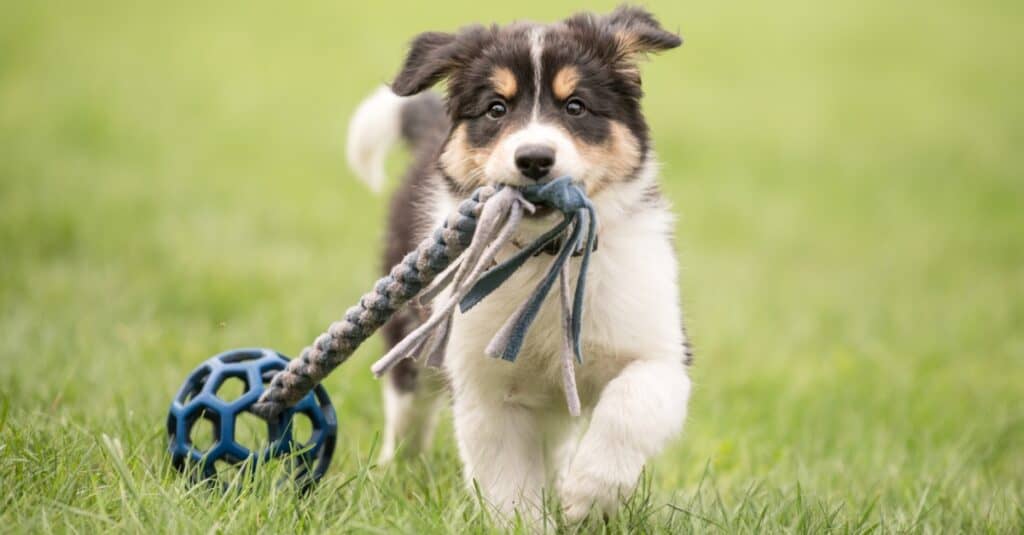
Be sure to remove all dog toys from your lawn before you fertilize it.
©iStock.com/K_Thalhofer
Even if you are using a natural and organic fertilizer, it’s a good idea to pick up all pet toys that are on the lawn before the treatment. Look for toys that could be hidden in the grass, including natural objects like sticks that your pet might play with. Any water or food bowls should be moved inside.
5. Follow All Label Directions.
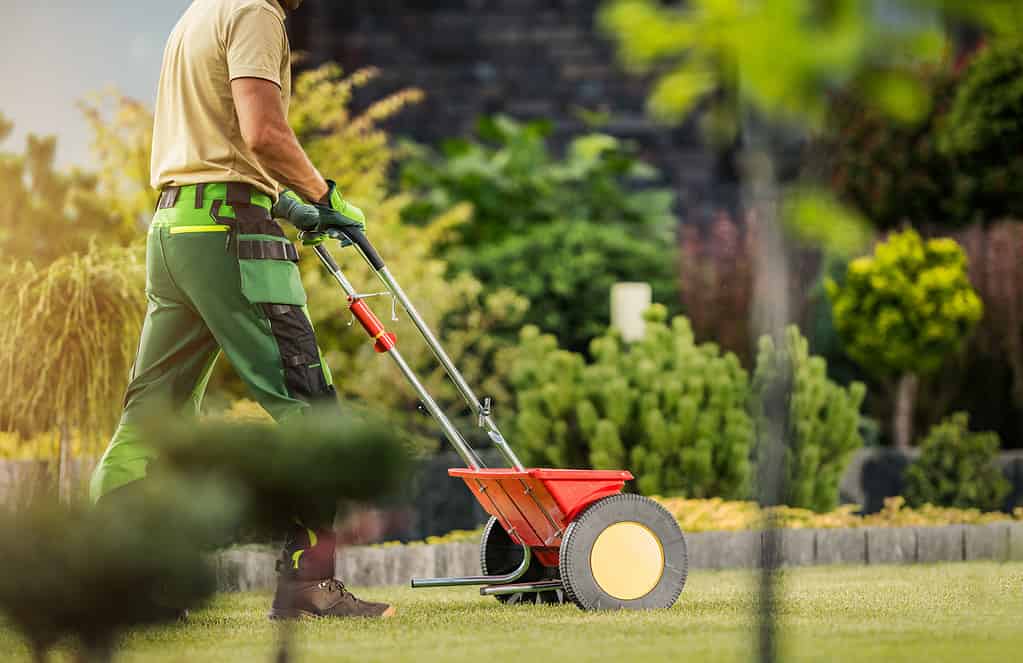
Applying fertilizer properly helps to protect pets and family members from harm.
©welcomia/iStock via Getty Images
Ensuring your cat or dog’s safety means thoroughly reading all of the instructions and warnings included on the fertilizer’s packaging. Follow each instruction carefully. Some fertilizer companies will recommend the use of a particular type of spreader. Be sure to spread the fertilizer evenly, to avoid clumps and high-buildup areas that could pose a threat to your pet (and to avoid discolored stripes of unfertilized grass).
6. Use Only as Much Fertilizer as You Need.

Wipe and rinse your pet’s paws and fur if you think excess fertilizer has attached to them.
©iStock.com/Volodymyr_Plysiuk
Using the correct amount of fertilizer is important. Excessive fertilizer can hurt both your pet and your grass. If the fertilizer does not absorb properly, excess material can get on your pet’s paws and fur and they could ingest it though licking. The amount of fertilizer that is appropriate for your lawn depends on the size of the lawn and the amount of nitrogen included in the fertilizer. Contact the fertilizer company if you are unsure of how much to use.
7. Keep Pets Inside After Fertilization.
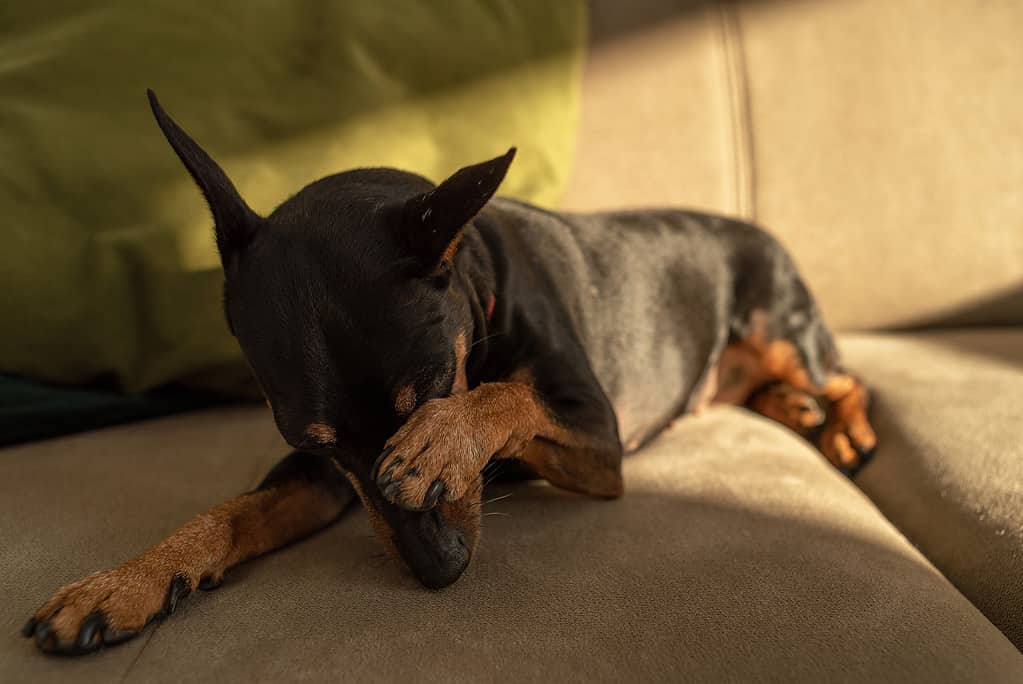
Dogs should not play in the yard for a couple of days after it has been fertilized.
©Sirina85/iStock via Getty Images
It can be heartbreaking to say “no” when your pet wants to play outside. However, it is critical to keep everyone, including your fluffiest family members, away from the lawn during and after a fertilization treatment. Experts recommend staying off the lawn for at least 48 hours, until the fertilizer has been completely absorbed. Follow the recommendations listed on the fertilizer label closely.
If your pet becomes antsy during their indoor time, try distracting them. Take your dog for an extra walk (steering clear of the lawn) around the time that he or she would normally play in the yard. Introduce your cat to a new toy or a new hiding spot until it’s alright to play outside again.
8. Consider the Weather Before Treating Your Lawn.
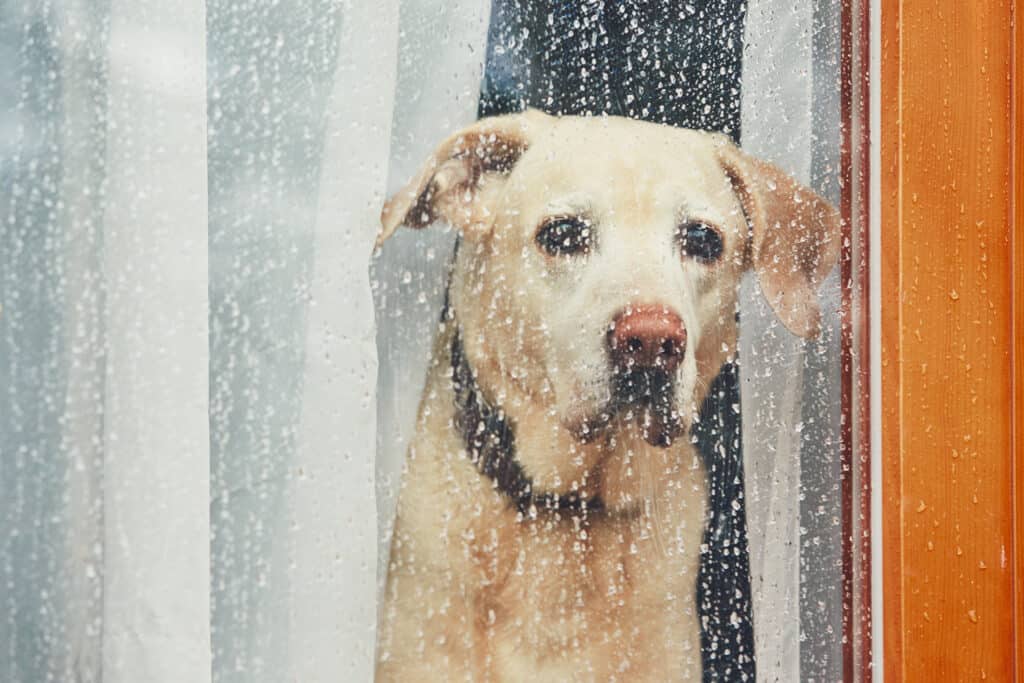
It’s important to check the weather forecast before beginning a fertilizer treatment.
©Jaromir Chalabala/Shutterstock.com
It’s important not to fertilize your lawn just before, during, or after a heavy rain. This is because excess water in the soil can cause the fertilizer to run off rather than being absorbed. In addition to harming the local ecosystem, fertilizer runoff can irritate or burn your pet’s paws if it pools or clumps on the sidewalk or other high-traffic areas without absorptive plants and soil. A drizzle or mild rain, on the other hand, can help fertilizer to absorb more quickly.
Dry fertilizers should not be applied on windy days. The wind can blow the mix off of the lawn and into contact with your pet. Keeping windows that are near the lawn closed is a good idea during and after the application.
9. Know the Symptoms of Fertilizer Poisoning in Pets.
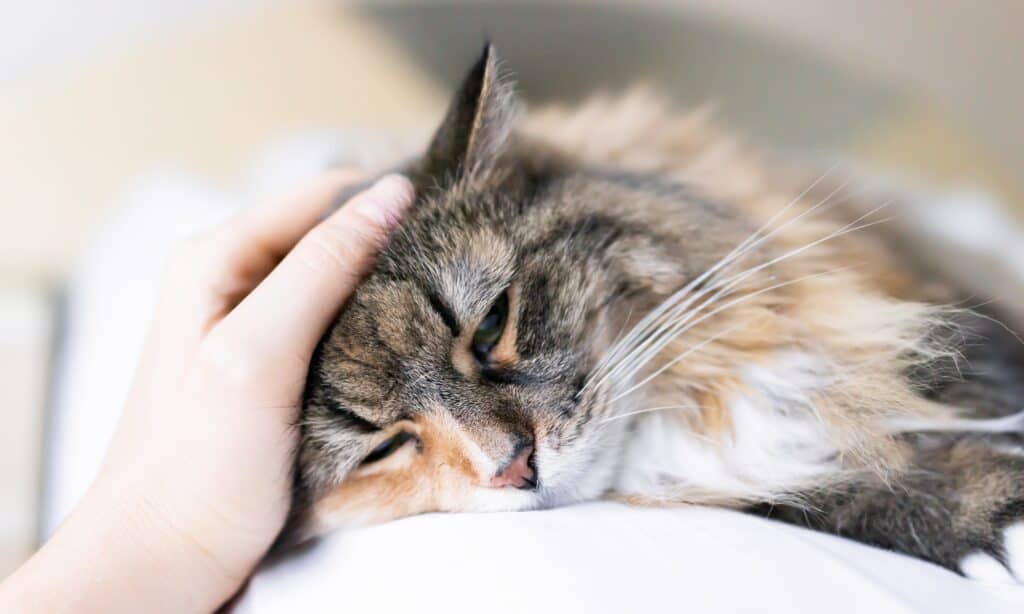
Lethargy can be a symptom of fertilizer poisoning in a pet.
©iStock.com/krblokhin
Learn the symptoms of fertilizer poisoning and allergic reactions in pets. In the event that your dog or cat does ingest or become exposed to fertilizer, you need to be able to identify the signs quickly. Even a natural and organic fertilizer can make your pet sick if it eats a large amount of it. If you notice any of the following symptoms in your pet after treating your lawn with fertilizer, call your vet immediately:
- Vomiting
- Diarrhea
- Unusual tiredness
- Shaking or seizures
- Stiffness
- Excessive salivation
- Swelling or rash
- Urination or defecation outside of their usual areas
- Disorientation
10. Store Fertilizer Away from Pets.
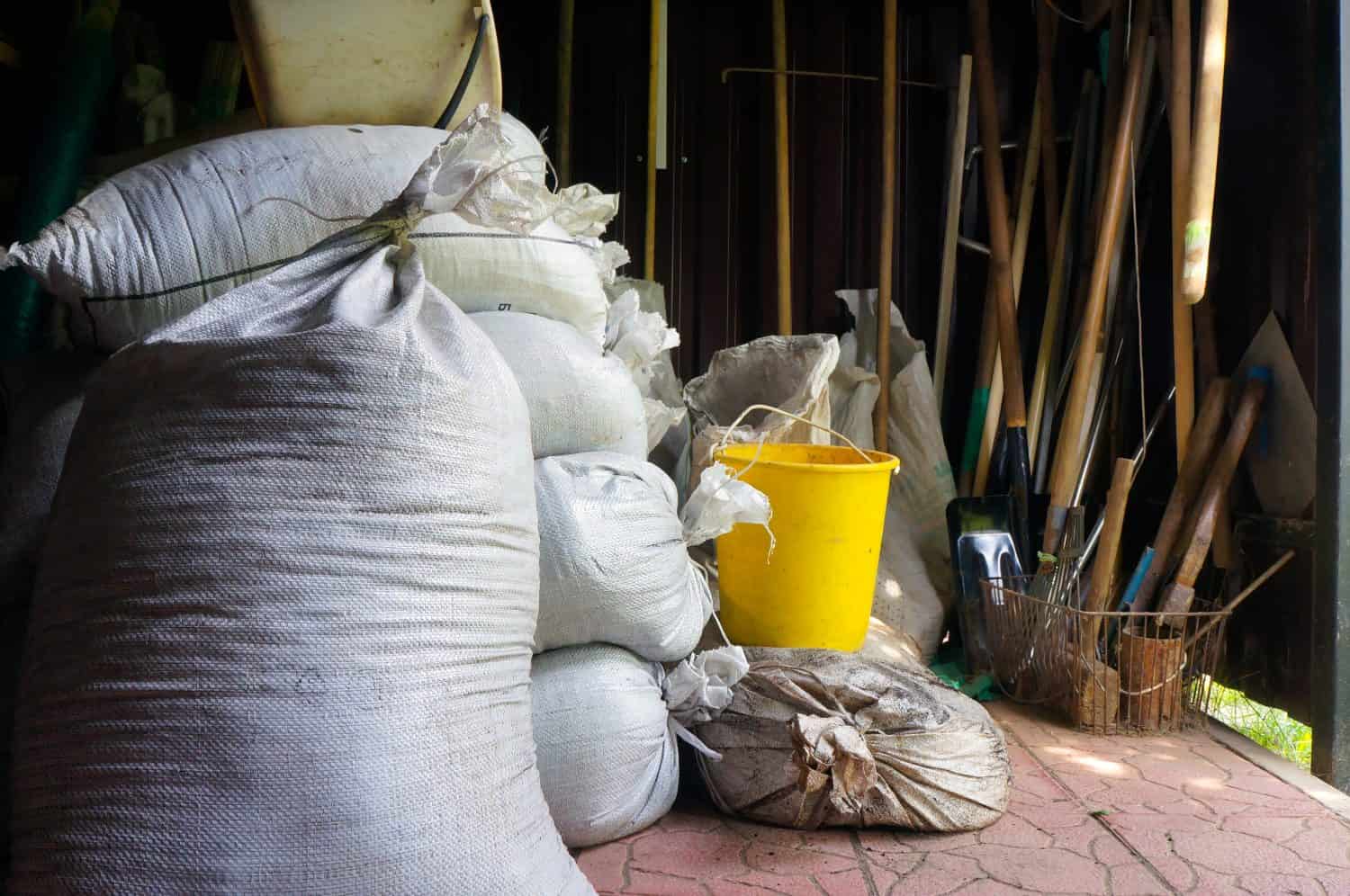
Fertilizer should be kept in a covered area away from pets and their food and water.
©troyka/Shutterstock.com
If you have leftover fertilizer after treating your lawn, be sure to store it correctly to preserve its integrity and prevent pets from getting into it. Keep it in its original bag so that you can reference the label during future uses. Store your fertilizer in a shed, garage, or other covered space that your pet cannot access.
| 1. | Complete a Soil Test. |
| 2. | Know Which Ingredients to Avoid. |
| 3. | Choose a Natural Fertilizer. |
| 4. | Clear the Lawn of Pet Toys Before Fertilizing. |
| 5. | Follow All Label Directions. |
| 6. | Use Only as Much Fertilizer as You Need. |
| 7. | Keep Pets Inside After Fertilization. |
| 8. | Consider the Weather Before Treating Your Lawn. |
| 9. | Know the Symptoms of Fertilizer Poisoning in Pets. |
| 10. | Store Fertilizer Away from Pets. |
Thank you for reading! Have some feedback for us? Contact the AZ Animals editorial team.








